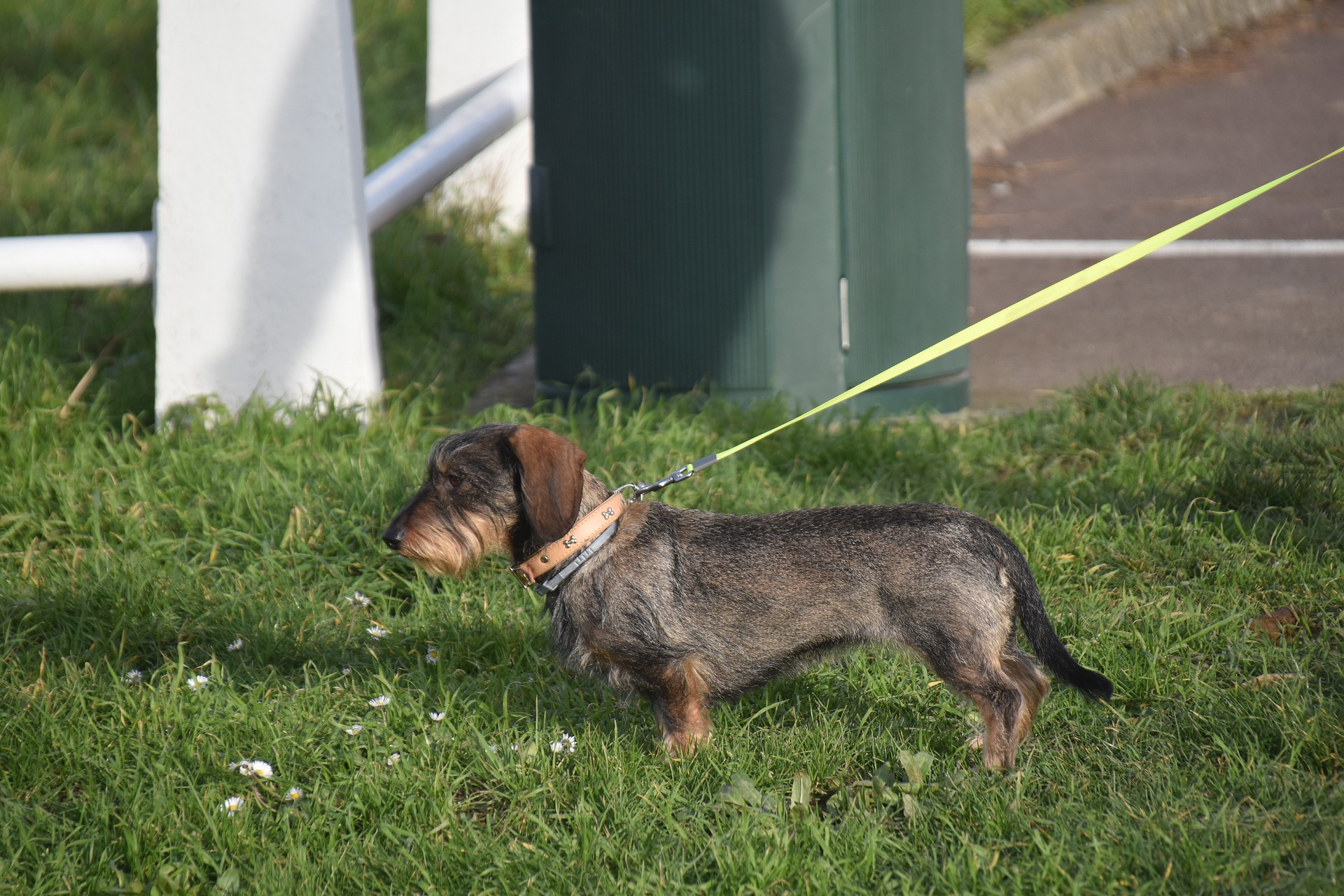With plenty more gorgeous summer and fall days ahead of us, let’s take this time to review proper leash etiquette so that your evening walks are as enjoyable as possible. After all, no one likes being pulled along while their dog dictates where to go. Learn why dogs act like this, how we often accidentally reinforce it, and how to improve their leash skills.
In short, dogs pull because they have a destination in mind that they want to reach—be it another dog, a scrap of food, or just an interesting smell. From the very first time you take a puppy on a walk, pulling is reinforced if you allow them to pull and reward them by going along. Don’t be dismayed if you’ve been allowing your dog to pull for years; it is possible to teach an old dog new tricks! The key is to stick with your resolution to change their behavior and not give back into their pulling.
First, put the leash on your dog in a quiet area–a backyard works excellently. They will likely get extremely excited and pull towards the gate or jump around. Stand still and ignore them, holding the leash close. Though it may take a few minutes, your dog will eventually calm down. Once they settle (either by sitting or laying down next to you), reward them with a treat and take another step. Odds are they start jumping again; pause again until they stop, then reward them. Repeat this process until you can take one step, then stop, and they will calmly step with you then settle. Though frustrating, this is a crucial first step to showing them that pulling and jumping is not a good way to get what they want. It also teaches that they are expected to move only when you do and to stop when you stop.
When your pup is ready to progress, you can take it to the sidewalk. If they start pulling, you have two options: walk in the opposite direction, or plant yourself until they return to you. By turning around and walking opposite from where they pulled, you directly communicate that pulling doesn’t get them what they want. Your first few walks might take place on just 30-50ft of the sidewalk, walking back and forth along with it if your dog is a notorious puller! Planting yourself serves a similar function–you prevent the dog from getting what they want and only resume once they’ve returned to your side. As always, have treats ready to reward them as soon as they choose to walk next to you with a slack leash or return to your side and sit down. Though it can be frustrating, avoid giving up and just continuing the walk or yanking back on the leash. Dogs usually pull even harder when they feel the leash’s resistance, and they won’t learn as quickly if you give in to their antics.
If you still struggle with a pulling dog, consider a head halter such as a Gentle Leader or a no-pull harness. These products discourage pulling by turning them around or to the side if they attempt to barge ahead.
Proper leash etiquette keeps both you and your dog safe and secure. If you need help with obedience or canine behaviors, call the Gulf Coast K9 Dog Training experts. We have the classes and expertise that you need.





